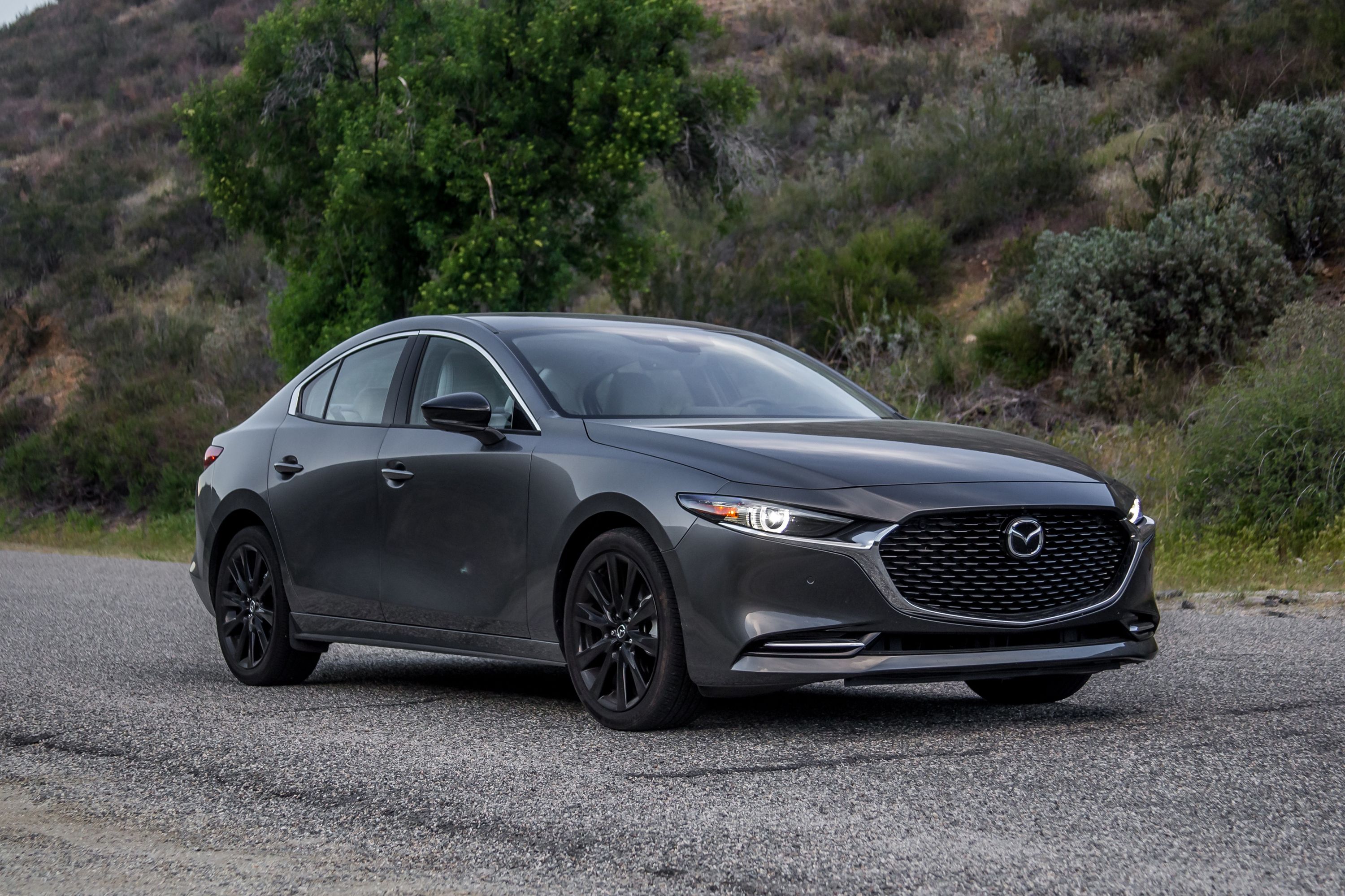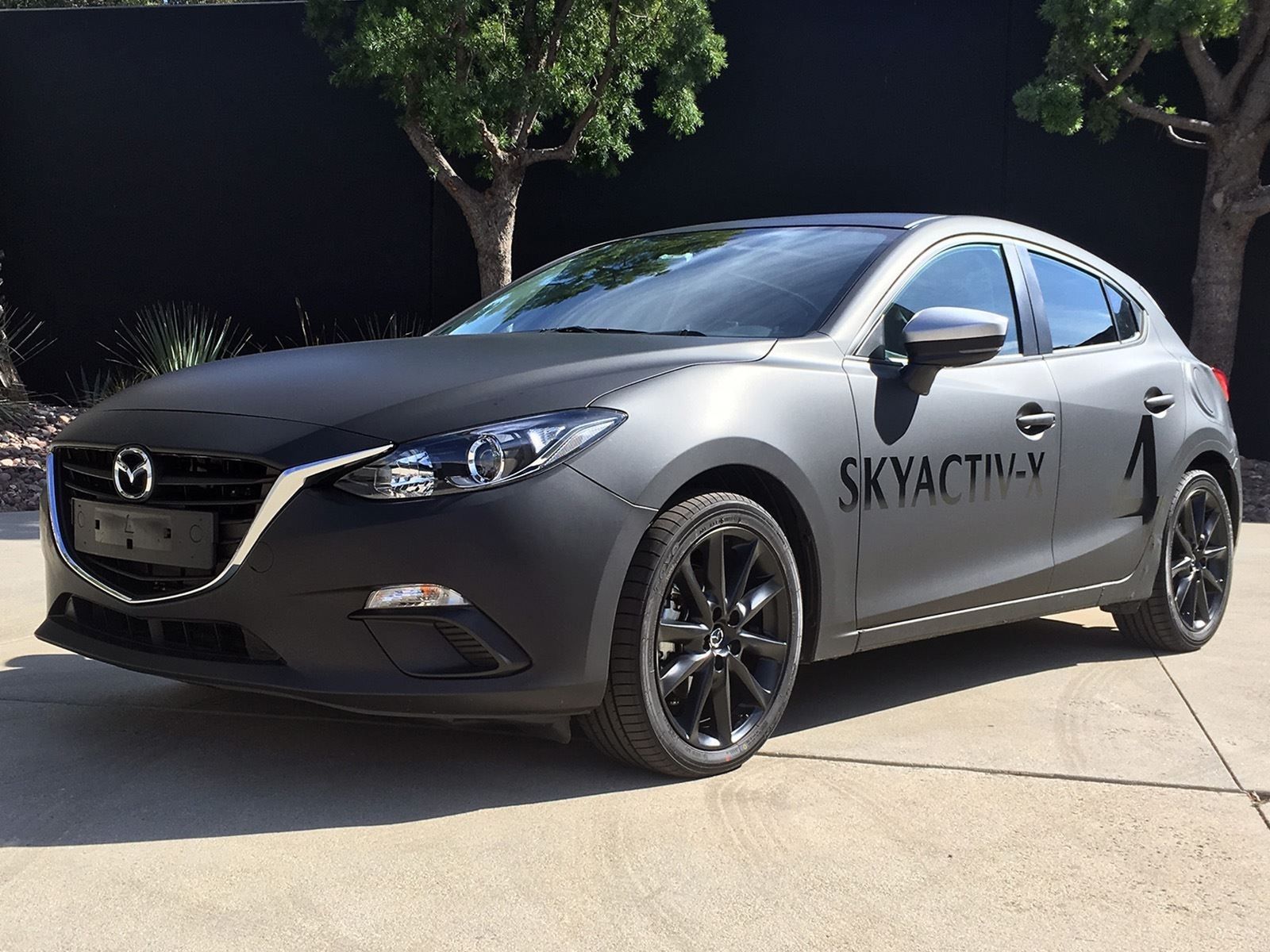
Mazda has developed a way to enhance the efficiency of the Skyactiv-X engine technology even further, thanks to the inclusion of a secondary spark plug. A patent discovered by CarBuzz was filed at the US Patent and Trademark Office (USPTO) detailing the new technology that will make spark-controlled compression ignition (SCCI) even more controllable, allowing Mazda to control the timing and prevent uneven combustion with greater efficacy. The result is more power generated using less fuel, which could soon find its way into something like the Mazda 3 and resolve Mazda's concerns that Skyactiv-X tech has too little power for the USA.
The Skyactiv-X engine is unique in that it uses an extremely high compression ratio in a gas engine. This high compression provides sufficient heat to spontaneously ignite a homogeneous air-fuel mixture in the combustion chamber, in the same way as diesel self-ignites. This leads to faster and more-complete combustion and reduced NOx emissions in a gas engine. However, this technology works best in light-load and low-speed conditions and may become prone to destructive detonation (uncontrolled combustion) when the engine works harder.
To contain this, Mazda added a spark plug to control the initiation of ignition, leading to the acronym SCCI for this Spark Controlled Compression Ignition system. Now they're reaching even further into diesel history by adding a pre-chamber and an extra spark plug to the combustion chamber.
In its latest iteration, the engine runs only on compression ignition in light-load, low-rev driving and completely switches off the spark plugs under these conditions. This gives Mazda another new acronym to apply to their engine tech: Homogeneous Compression Charge Ignition (HCCI). In short, when it's not working too hard, the engine uses only the heat and pressure from the compression stroke to ignite the air-fuel mixture in the combustion chamber all at once. This enables the engine to use an extremely lean mixture under these conditions, saving fuel and cutting emissions.
However, the most interesting innovation isn't that this gas engine runs without using its spark plugs in light-load conditions. What happens when the load is increased is the really interesting part because this new Mazda design incorporates two spark plugs per cylinder for its spark ignition (SI) system, one of which is hidden in a tiny secondary chamber with three flame transfer holes at the top of the combustion chamber.
As the air is drawn into the combustion chamber during the intake stroke, some fuel is carefully timed and injected directly into the chamber as well, with enough swirl to mix them effectively. This mixture is then compressed, and some of it enters the secondary combustion chamber through the transfer holes, where it surrounds the secondary spark plug's tip.
When the time comes to fire that cylinder, the main spark plug in the primary combustion chamber fires first as normal, initiating the burn process. A split second after that (or at the same time, depending on the operational conditions), the secondary plug sparks, turning the mixture in its little chamber into a super-hot plasma, which has nowhere to go but into the main combustion chamber through the three transfer holes.
These extra-hot flame "jets" then exit the secondary chamber into the main chamber, which speeds up the main ignition event and completely burns any residual gasses in the chamber for cleaner emissions. This also helped the engineers to solve a problem experienced during the development of the original Skyactiv-X engine, which was a rough transition between HCCI and SI modes.
This issue necessitated adding a spark plug to regulate the compression ignition phase and prevent detonation. In this new iteration, the two spark plugs can be timed differently to smooth out this transition phase, evening out the torque curve when the engine switches between super-lean HCCI and lean SI modes.
While Mazda is still only dipping its toes into the EV market, having recently announced a new rotary-powered range extender for the Mazda MX-30, the company clearly believes that the internal combustion engine is far from obsolete. It continues to develop ever-better ICE powertrains, and inventions like this new pre-chamber gas engine prove that there's always something new to try. Even if everybody else eventually gives up on ICE, we can likely rest assured that Mazda will come up with a new way to get more life out of the gas engine.

